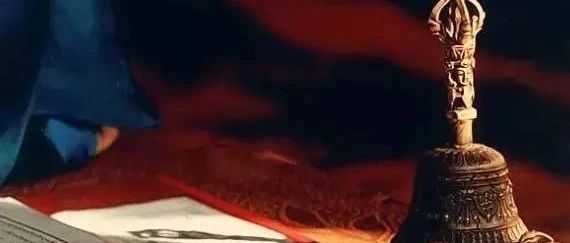佛门法器大揭秘!
藏传佛教Buddhism

法器有两种意思。一是指人。凡能修行佛道者,称为法器。二是指物,广义而言,凡寺院内有关庄严佛坛,用于祈祷、修法、供养、法会等各类佛事的器物,或佛教徒所携行的念珠、锡杖等修道的资具,统称为法器。又称佛器、佛具道具。法器的种类繁多,其用途、大小形状各异,即以同一名称的法器而论,也因制作材料、手法,或宗派、时代之不同,而在形式上显得迥然不同。藏传佛教法器的种类繁多,各种法器的用途、型制、大小也各不相同。藏传佛教的法器大多用于供养诸佛、庄严道场、修持佛法等。法铃、金刚杵、法鼓、法螺、念珠、嘎乌盒、转经筒、酥油灯是藏传佛教最常见的八大法器,是众多佛教仪式和重大法事活动中必不可少的器具。图为金刚杵、金刚铃,原为古印度的一种兵器,佛教密宗用他表示智慧坚利,斩断烦恼,降伏恶魔的法器。法鼓:是藏传佛教中的礼赞法器之一,种类很多,如大鼓、铜鼓、腰鼓、曲柄鼓、羯鼓、嘎巴拉鼓等。主要用于佛教庆典、宗教节日、活佛坐床、开光仪典等重大喜庆法事活动中。法螺:又叫右旋海螺,藏语称为“东嘎叶起”,是藏传佛教僧侣从事佛事活动、讲经说法时吹奏的法器,又是乐器。作为法器的海螺多为白色,按佛经说,佛祖释迦牟尼讲经说法时声音宏亮如同大海螺声,响彻四方,所以用法螺代表法音。念珠:是佛教礼敬法器的一种,藏传佛教的念珠一般一串有108颗。在修五加行之大礼拜、供曼扎时,为了方便计数,也用25颗一串的念珠。念珠念佛时用来计数和束心的法器。转经筒:是藏传佛教的祈祷法器的一种,又叫“嘛呢”经筒,嘛呢轮。分为手摇式和固定式两种。固定式转经筒是指装置在藏传佛教寺院里的经筒,一般有铜制和木制两种,经筒筒身刻有“唵、嘛、呢、叭、咪、吽”六字真言,里面装有经卷。依据藏传佛教的教律,凡转动经桶一回,等于诵读了一遍内藏经文。转经是藏传佛教信徒们忏悔往事、消灾避难、修积功德最好的方式。酥油灯:藏传佛教中,是供奉神明时不可缺少的法器之一。酥油灯在藏传佛教信徒心中有着十分重要的地位,是信徒们的精神之灯。除了在寺庙,在藏族人家中,也能看到长明不灭的酥油灯。无论是家中举行念经法事,还是为逝者作祭祀活动,都要点上几盏或上百盏酥油灯。
汉传佛教的法器钵:又称钵多罗、钵和兰等。是僧尼常持道具(比丘六物)之一,一般作为食器。由于比丘持钵以应受他人的饮食,钵又称为应器。持钵行乞时称为“托钵”。而比丘不得储存多个钵,护持钵要如护持自己的眼睛一般,应当经常以澡豆洗净除去垢腻。梵钟:又称大钟、撞钟、洪钟等。多属青铜制,少数为铁制,一般高约150公分、直径约60公分,形式是上端有雕成龙头的钓手,下端有相对的两个莲华形撞座,称为八叶,撞座以下称草间,下缘称驹爪;以上则分池间、乳间两部分,且乳间有小突起物并列环绕,又连结撞座,呈直角交叉的条带称为袈裟,又名六道。另外,钓手旁有呈圆筒状的插通内部。梵钟多悬于钟楼,作为召集大众或早晚报时之用。木鱼:佛教寺院中使用的木鱼分为两种,一种是圆木鱼,另一种是长木鱼。圆木鱼,诵经时所敲打,大众诵经时,音声随其节拍而整齐划一。此外,诵经敲打木鱼,取意于鱼的特殊习性,即不论在水中悠游或静止不动,眼睛都睁着不休息,佛门取其精进的特性,策勉修道者要用功,不可懈怠。长木鱼:雕刻成鱼形或龙头鱼身形,往往悬挂于斋堂或库房廊下,作为集合僧众之用。因为它与民间乐器“梆子”的形制、发音都极相似,所以称为“鱼梆”。又因为它常常是在斋饭时敲击,所以也叫做“饭梆”。在佛教寺院中,长木鱼大都是头向山门悬挂的。鼓:有羯鼓、鱼鼓、云鼓、摇鼓、金鼓、石鼓、悬鼓等。依其用途可分为:斋鼓(食时所用)、浴鼓(浴时所用)及诵经、梵呗等所用之鼓。今之寺院,常见于大殿前的左右两方建钟鼓楼,分别安置钟、鼓,称为“左钟右鼓”。寺院每于晨昏击钟敲鼓,以警行者当勤精进,慎勿放逸,称为“晨钟暮鼓”。云板:报知时刻或集会时敲打的器具。依其形状称为云板、鱼板等。引磬:俗称小手磬。底部中央贯以纽,附木柄,以小铁枹击之,于诵经礼佛起止时击之,以引起大众注意之法器。大磬:大磬为直径三十至六十余公分之磬,由维那主之,凡住持或尊宿、仕宦等礼佛,皆鸣三下。铛子:法会唱赞时,与铪子配合板眼敲打,用以庄严节奏,为板乐供养之一。铙钹:铙、钹原为娱乐用的乐器,后被用于佛门中的伎乐供养,而成为塔供养及佛供养的法器。香板:禅林中用以警策修行者的木板(形如宝剑),依使用目的不同而有诸多名称:用以警策用功办道者,称“警策”香板;用以惩诫违规者,称“清规”香板;用以警醒坐禅昏沈者,称“巡香”香板;于禅七中使用者,称“监香”香板。一般系由方丈、首座、西堂、后堂、堂主、维那、知客、纠察等职事持用。香炉:又作火炉、薰炉。烧香的器皿,以供礼拜或礼佛、菩萨之用。香炉的形状多样化,大体分为方形和圆形,有三足、四足或无足之别。有的香炉上还镌刻图案、经文等。大致可分为四类,即:置于桌上的置香炉;持于手上的柄香炉;坐禅时所用的钓香炉;灌顶时,受者跨越而以净身的香炉。文殊师利勇猛智 普贤慧行亦复然
我今回向诸善根 随彼一切常修学
三世诸佛所称叹 如是最胜诸大愿
我今回向诸善根 为得普贤殊胜行

愿所有众生都能离苦得乐
=== 随喜分享朋友圈• 法布施功德无量 ===


6
链接已复制